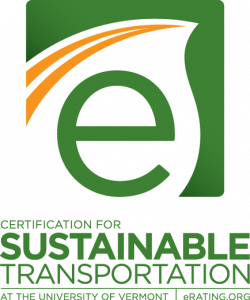High on comfort, low on emissions.
Our fleet of coaches runs on new clean diesel, called Ultra Low Sulfur Diesel (ULSD). Oil companies have reduced the sulfur in ULSD from 500 ppm to the EPA-mandated level of less than 15 ppm. These combined advances in technology reduce the particulate matter (black smoke) by 90% from current levels.
Is travel by motorcoach really a greener way to ride?
Given all of today’s transportation options, the motorcoach is the best way to travel if you’re looking to minimize your carbon footprint. Traveling by motorcoach uses less fuel and produces less CO2 than comparable travel by other modes of long-distance transportation.
What other ways do you conserve energy?
Our coaches feature components that help us to minimize fuel consumption, including the SmarTire® pressure monitoring system. We subscribe to our tire manufacturers’ recycling program. Drivers are well-trained and adhere to appropriate driving standards to conserve fuel. We recycle all fluids and have a stringent maintenance program in place that keeps our fleet in top shape for better fuel efficiency.
What is eRating?
The Certification for Sustainable Transportation’s (CST) eRating certification program is an independent, third party certification, education and labeling initiative for owners and operators, manufacturers, and passengers of transportation vehicles. The program uses research-based criteria to evaluate vehicles. The “e” in “eRating” represents what the program is: an easy, economical way to promote environmentally friendly, energy efficient transportation options and education programs.
Do you use ultra low sulfur diesel or bio-diesel?
Our newest motorcoach models can run on either Ultra Low Sulfur Diesel or a Bio-Diesel blend.
More Information?
For more information on the certification for Sustainable Transportation, visit erating.org
How does motorcoach travel protect the environment?
Motorcoaches are a greener, fuel-efficient way to go, naturally. Each coach carries as many as 56 passengers, which keeps numerous cars off the road, ultimately reducing emissions and traffic congestion. A motorcoach uses about 17 gallons of fuel to travel 100 miles (assuming 6 miles per gallon). Taking the same number of people the same distance by car would use 70 gallons of fuel.
Passenger cars alone have caused about 60 percent of U.S. carbon emissions over the last 20 years, according to some studies. A private vehicle is the largest contributor to a person’s carbon footprint.
Motorcoaches on average deliver 336 passenger miles per gallon of fuel. In contrast, single-occupant automobiles achieve 28 passenger miles per gallon at highway mileage.
Motorcoach travel offers an immediate alternative for those seeking to reduce their energy use and carbon footprints.
Anything else to know about motorcoach travel?
Higher fuel costs, global warming and more comfortable, luxurious models are driving more consumers to travel by motorcoach. The economic impact of a motorcoach makes it the best way to travel. Motorcoaches account for a mere 6 cents in federal subsidies per passenger trip, while public transits cost 77 cents per passenger trip, commercial air carriers cost $4.32 per passenger trip, and Amtrak costs $46.06 in taxpayer subsidies per passenger trip.
Motorcoaches provide cost-effective mobility to millions of Americans at virtually no cost to taxpayers, while other transportation sectors receive billions in annual federal subsidies.


